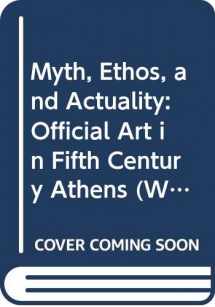
Myth, Ethos, and Actuality: Official Art in Fifth Century Athens (Wisconsin Studies in Classics)
Book details
Summary
Description
Myth, Ethos, and Actuality examines the depiction of mythic themes on Athenian public monuments in the period following the Persian wars, during the second and third quarters of the fifth century B.C. By relying not only on material remains, but also on the evidence of contemporary Greek history, rhetoric, and poetry, David Castriota interprets the Athenian monuments as vehicles of an official ideology intended to celebrate and justify the present in terms of the past. Castriota focuses on the use of myth as part of a strategy of ethical antithesis that asserted Greek moral superiority over the "barbaric" Persians, whose invasion had been repelled a generation earlier. He examines how, in major public programs of painting and sculpture, such leading artists as Mikon, Polygnotos, and Pheidias recast the Persians in the guise of wild and impious mythic antagonists (Amazons, Centaurs, Trojans, and Giants) to associate them with the ethical flaws or weaknesses commonly ascribed to women, animals, and foreigners. The Athenians, in contrast, were compared to mythic protagonists (Greeks, Lapiths, etc.) representing the excellence and triumph of Hellenic culture. Castriota's study is innovative in emphasizing the ethical implication of myth as an official tool of moral and ideological justification and the transformations that such concerns imposed on various mythic analogues. In the guise of mythic precedent, contemporary events could be endowed with a deeper cultural and religious significance, appearing as the outcome of long-established societal standards and divine will. Castriota explores how the myths were substantially altered to resemble the invasion and defeat of the Persians and to render them more effective as archetypes for the defense of Greek culture against a foreign, morally inferior enemy. The book also looks in new ways at the isse of audience response. By considering how the patrons and planners of such imagery could anticipate its impact on the viewer, Castriota reveals their efforts to manipulate public opinion through the selective presentation or repackaging of mythic traditions.


We would LOVE it if you could help us and other readers by reviewing the book
Book review



